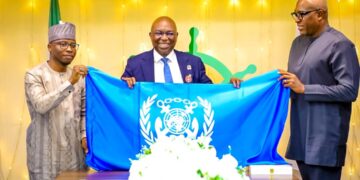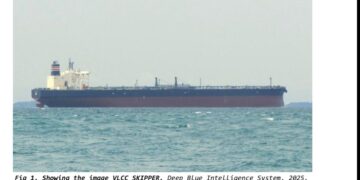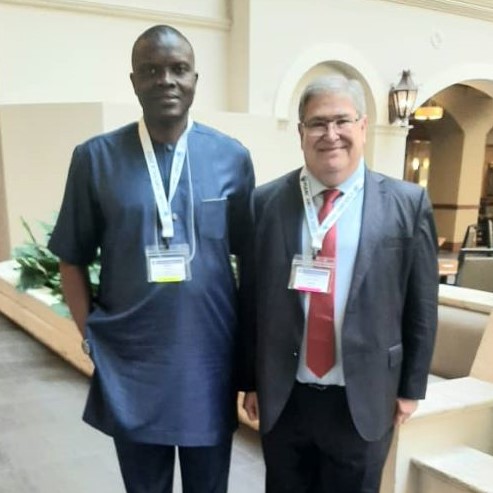By Lanre Badmus
The discontinuation of the subsidy on petrol which has led to a sharp rise in transport fares and food prices across the country has again brought on the front burner the search for reliable and affordable transportation options that would mitigate the negative impact on residents and the economy.
President Bola Ahmed Tinubu in his “my fellow citizens” address on 31st July 2023, unveiled a bouquet of palliatives from the N500 billion extracted from the National Assembly, including the promise to invest N100 billion on 3,000 buses. The President’s mention of a new infrastructure support fund that would be invested in critical areas of the economy should be an opportunity for Nigeria to prioritize her extensive lagoons, rivers, creeks and other waterways – a cost-efficient and eco-friendly mode of transportation.
According to the World Bank, the average construction cost of 1km of road in Nigeria is between N400million and N1bilion. The cost of road maintenance is also as high as cost of building – it is between N100million and N1billion, less than 10 per cent of this amount is the average investment per kilometer required by an inland waterway.
Nigeria is said to have about 200,000km of roads, of which 18 per cent or 36,000km belongs to the Federal Government, the States own 16 per cent while the remaining 66 per cent belongs to the 774 local councils. Every year, humungous amount of money are expended by the three tiers of government on road infrastructure, however , only about 35 per cent of roads in Nigeria are motor-able.
The transformative potential of water transportation may have been lost to those who had governed Nigeria all these years; the Tinubu administration should not sustain this neglect of the waterways. The development of waterborne infrastructure brings more benefits beyond transport, improvement of inland navigation helps to reduce flooding, provide reservoirs for electricity and to enable all year farming, create employment, promote tourism, encourages trade and industry, while reducing potential environmental damage associated with automobiles and fossil fuels.
The waterways move ten times the quantity of freight as against the capacity of cargo trucks on our roads. It is less expensive to develop the waterways compared to highways and railroads. A litre of fuel used on the waterways can transport four times the tonnage that can be carried by road over the same distance. Although the movement of freight by trucks enjoys more flexibility (door to door) and speed over water transport, the delays occasioned by traffic congestion and human interference, reduces this advantage. Today, technology has made it possible for riverboats and barges to achieve a competitive speed as a road truck.
Inland navigation has for centuries been used mostly for bulk cargo transport (farm produce, sand, stones). Nowadays, with industrial development, it is used in the transport of manufactured goods, automobiles and containerized loads. It also plays an important role in goods distribution in densely built-up urban areas. Countries with major rivers have harnessed their inland waterways into a safe, efficient and environmentally friendly distribution network that enables low production costs, promotes trade and social cohesion. The major river body serves as the central spine linked to smaller rivers. The waterway grid interphases with cities and industrial regions and the railways as likely origins and destinations of freight, thereby creating multi-modal transport interchanges.
Several studies have affirmed that movement of cargo using inland waters is cost competitive in relation to road and rail transport modes. Pushed tow of barges can move more ton – kilometers per distance unit than any land based mode of transportation. Although pipeline transportation is more efficient than inland navigation, but it also has certain disadvantages like cost of investment, limited to only one type of cargo (mostly crude oil and gas), need for the flow to be always constant and to correspond to the full nominal capacity and travel conditions that reduce its flexibility. All these result in transportation of the liquid cargo by inland waterways very often being more cost-effective than by pipeline.
In the United States of America, the Mississippi River transports about 175 million tons of freight a year. On the Rhine River that flows from Switzerland through Germany to the North Sea, connecting several industry clusters to the ports of Rotterdam and Antwerp; inland barges move no less than 300 million ton of goods each year. In China, the Yangtze River and its tributaries transport 45 percent of the country’s total freight throughput. The European Union has since established a pan-European inland shipping (E-waterway) network, connecting hundreds of cities and industrial regions.
The energy efficiency of inland water transportation has also been well documented. Inland waterway transport is 1.6 times more energy efficient than the railway transportation and close to seven times than the road transport. Nigeria’s battle against climate change will be well served by making better use of a low carbon emitting transport mode – her inland and coastal waters. Furthermore, inland barges and ferries can be powered by liquefied petroleum gas (LPG), this would reduce the country’s carbon footprints and overall logistics cost for businesses.
The major rivers in Nigeria are the Niger River and its tributary, the Benue River. Niger River is the largest river body in West Africa, it stretches some 4,180km through Guinea, Mali, Niger, on the border with Benin and then connects Nigeria, discharging through a massive delta (Niger Delta) into the Gulf of Guinea. The Niger and Benue rivers run into each other at Lokoja in Kogi State. Twenty-eight of the country’s thirty-six States can be connected by water. Nigeria is also linked with five of her neighbours – Benin (Port Novo), Equatorial Guinea, Cameroon, Chad and Niger Republic by water.
The Federal Ministry of Transportation is responsible for policy direction and projects related to movement of people and goods in the country. In the 2023 Federal Government budget, the sum of N130.35billion was allocated to the Federal Ministry of Transport (FMoT). The Ministry’s capital expenditure was N85.23billion for the development and provision of railroads; N1.14billion for the development and provision of roads; a paltry N15million for the development and provision of waterways.
The National Inland Waterways Authority (NIWA), Federal agency responsible for inland water transportation was allocated N5.397billlion out of the Ministry’s total budget for its personnel and capital expenditures. It’s no surprise that NIWA has committed its capital allocation to projects that addresses waterways protection (e.g., purchase of boats, wreck removals and hydrographic surveys) rather than waterways infrastructure development.
Lagos is perhaps the only State of the Federation with a dedicated water transport safety agency. The State Government has invested in modern ferry terminals, patrol boats and traffic monitoring assets to enhance safety and security on Lagos waters. Other States need to copy the Lagos example and construct quality access roads to link river terminals to ease the transfer of goods and passengers. The 770km of the Niger River that is in Nigeria, along with the Benue River, which is over I,000km in length, should be developed into a national waterway system (similar to a road highway) linked to other river bodies in the north and south of Nigeria.
Currently, there is an emerging but thriving inland barge service being provided by local and foreign private entities within the Lagos Pilotage District, aside the small boat operators common in the southern deltaic (Niger Delta) region of the country. The amount of goods transported by water in Nigeria is not known exactly, but is very low compared with the size of her economy. The institutions responsible for inland waterways at the Federal and State levels are not well resourced, poor funding has impacted negatively on their regulatory/oversight functions, including manpower development and research.
It is important that Nigeria seeks external help to optimally harness the benefits the development of water transportation brings. The World Association for Waterborne Transportation Infrastructure (PIANC) is one of the oldest technical associations with special focus on waterborne transport infrastructure. Established in 1885, PIANC brings together the best international experts on technical, economic, and environmental issues in the field of waterborne transport infrastructure. Its international working groups provide guidance to governments and private partners on issues impacting on ports, marinas, waterways, dredging, hydrography, navigation, environment, engineering, safety etc. Partnering with PIANC will no doubt yield multiple and significant benefits to Nigeria’s blue economy.
Lanre Badbus is a Transport Policy Analyst and Member of the World Association for Waterborne Transport Infrastructure (PIANC).
































































